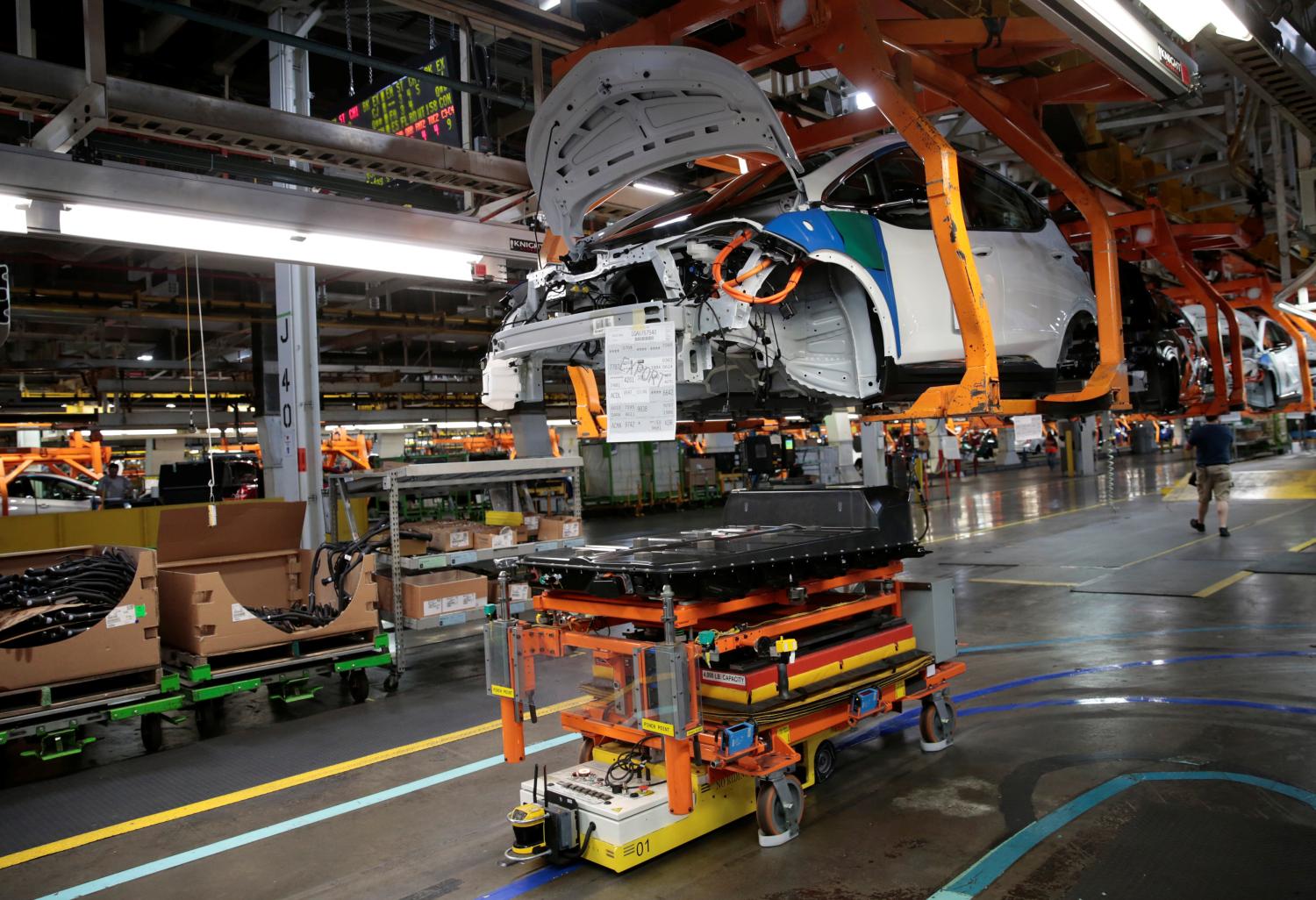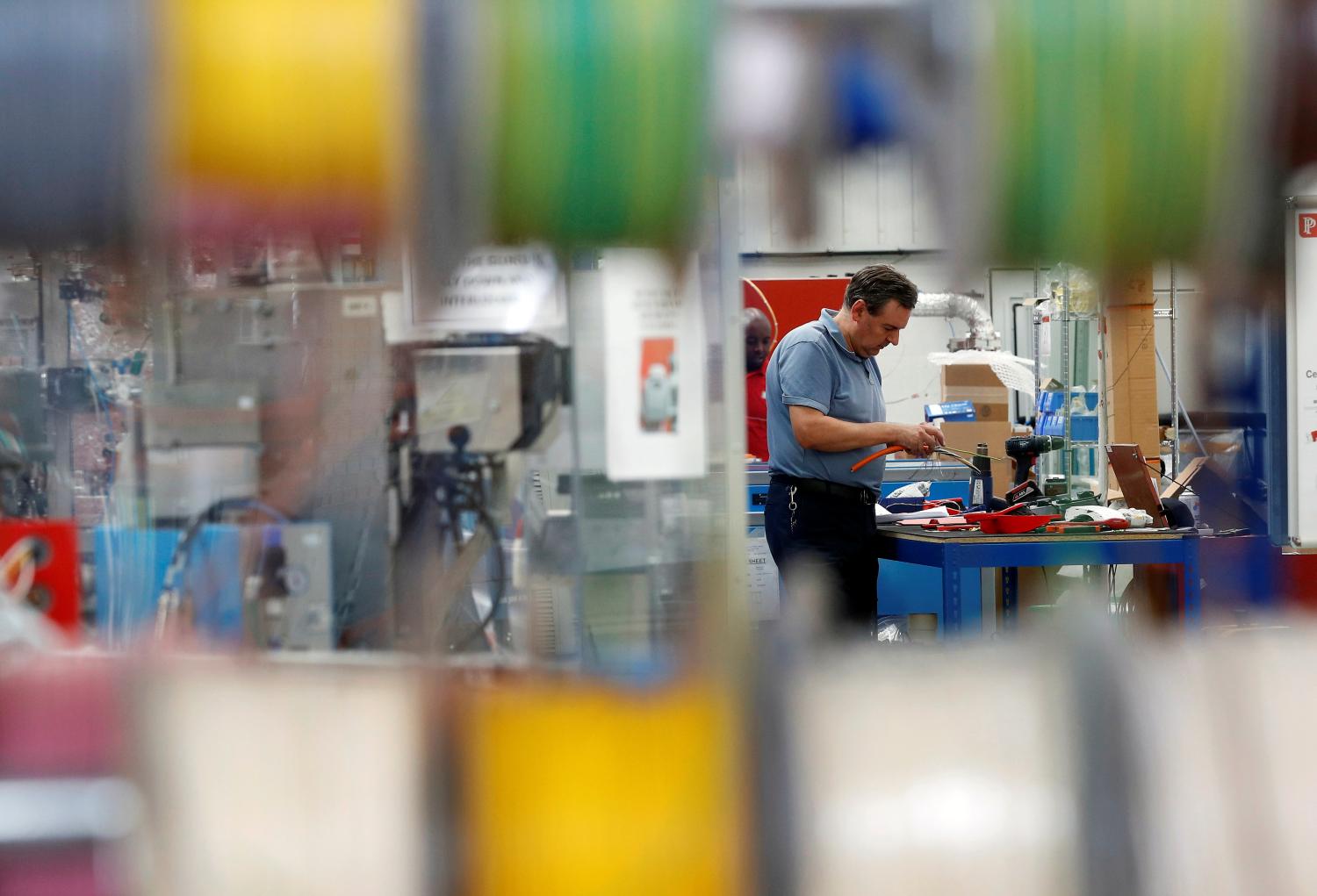This report is part of “A Blueprint for the Future of AI,” a series from the Brookings Institution that analyzes the new challenges and potential policy solutions introduced by artificial intelligence and other emerging technologies.
President Clinton’s first inaugural address contained a phrase that is as relevant today as it was then: “the urgent question of our time is whether we can make change our friend and not our enemy.” It’s a phrase that he never used again, as far as I can tell, any other time over his eight years in office.
It’s not difficult to understand why. Many people are fearful of change, even though evolution and thus constant change—biological, political, and organizational—is a central part of life and history. Changes that come too rapidly, pushing people out of jobs or suppressing their wages, without institutions or policies able to restore the status quo, are especially disturbing. We see the results all around us today: high and rising rates of opioid abuse, and political and religious anger that is dividing our society and our politics.
While President Trump has exacerbated these divisions, the underlying trends have been in the making over last three decades of stagnant wages (moderate increases in total compensation have been swallowed up by rising health care costs) and increasing income and wealth inequalities. In combination, the two trends are putting the American Dream of rising living standards out of reach for ever larger numbers of our citizens.
Nothing has been more important in driving increased inequality and the threat it poses to the American Dream than technological change, or “automation.”
Many villains have been blamed for these developments, including increased trade and outsourcing, the rise of the gig economy and freelance work, the decline in unionization, and tax reform tilted to the rich. But nothing has been more important in driving increased inequality in particular and the threat it poses to the American Dream than technological change, or “automation”—covering the combination of advances in artificial intelligence (AI), semiconductors, and robotics. That is because technological changes over the past several decades have favored those with advanced skills, especially those in information technology.
Addressing the challenge of automation: The need for lifelong learning
The logical response to continuing automation is for the government to strike a new 21st century bargain with its citizens. The government should help them to help themselves throughout their working lives to upgrade or acquire the skills the market demands to fill the new jobs that will be created by automation, either directly (such as making AI work better) or indirectly (working in other sectors, such as entertainment, leisure, and health, where consumers are likely to spend much of the cost savings generated by automation). This can be accomplished through government matches to tax-deferred training accounts and/or through lifetime training loan accounts, with repayments tied to future income in ways discussed shortly that minimize federal subsidies and thus pressures on an already excessive and mounting federal deficit.
The case for assisting lifetime training is especially strong given the inability of most Americans to pay for training when they want or need it (ideally before they are forced to). As it is, four in 10 Americans can’t meet a $400 financial emergency without borrowing or help from family and friends. Almost 8 in 10 are living from paycheck to paycheck.
The illusion of cost-free solutions
But federal elected officials or candidates, in both parties, have taken very different approaches: advancing seemingly cost-free “solutions” to stagnant and unequal wages that pay little or no attention to the lifetime challenges automation poses to all workers, which some of these “solutions” could aggravate.
Tariffs protecting U.S. industries and firms in the name of “fair trade” simplistically seem to promise U.S. workers that their jobs or wages, or both, will also be better protected. Not since the 1930s has an American administration embraced tariff hikes as enthusiastically as has the Trump Administration. Few Democrats have challenged the administration’s reversal of trade liberalization—a central tenet of the post-War international order spanning seven decades.
The benefits of trade protection are temporary, it not illusory, however. Higher tariff walls will not stop automation, and thus, the ongoing replacement of workers with machines.
The benefits of trade protection are temporary, if not illusory, however. Higher tariff walls will not stop automation, and thus, the ongoing replacement of workers with machines. Even when new tariffs induce shut down plants to reopen—a rarity—only limited numbers of former workers tend to be called back, either because others have moved, or because the plants have been modernized to require fewer workers than before.
Moreover, any “benefits” of trade protection for import-competing firms and workers come with costs, both to workers at these firms—through higher prices they pay for the goods they buy—and to workers in exporting firms, whose costs go up because of tariffs and whose foreign markets shrink when other countries retaliate, as China and Europe have done in response to the Trump tariffs.
Democrats have supported other policies that promise immediate wage increases, primarily for those at the bottom of the income scale: stronger labor laws to facilitate formation of unions and their exercise of bargaining power to lift wages, and a substantial increase in the federal minimum wage, to $15/hour (up from the current $7.25, which is now exceeded in most states). Such policies indeed will raise wages for those fortunate enough to keep their jobs, but wage increases that outpace productivity advances also will encourage firms to automate more quickly, inducing more labor market disruption and anxiety, while raising costs and hence prices of goods and services that people buy. Like tariffs, the cost-raising impacts of these policies are hidden from view—the best kind since that makes the proposals seem costless—since no seller earmarks what portion of its prices are due to any single policy or set of them.
For those higher up the income scale, or aspiring to be, more Democrats are embracing tuition-free four-year college at state universities, or as a fallback, tuition-free community college. There is a strong case, given abundant evidence linking educational attainment and lifetime earnings coupled with the benefits to the economy and to society of a more educated public, to be made for reducing the financial burdens of paying for college so more students can attend and complete their degrees. But given the current enormous federal deficit, now in the range of five percent of GDP and projected to double over the next two decades, any proposals for additional federal spending must generate the greatest public benefit for the buck and be paid for, either through higher taxes or reduced spending elsewhere.

The Obama administration’s proposal to pay for students’ community college tuition has an easier time meeting both tests than free college for every student from families earning less than $125,000—the income threshold in the plans supported by Senator Sanders and Democratic presidential candidate Hillary Clinton during the last campaign. For one thing, the price tag of the community college proposal, at roughly $6 billion a year over 10 years, is about 1/7 of the $40 billion annual cost of Sanders’ original free four-year college proposal (which also included free community college tuition), and thus would require far less additional revenue or expenditure reduction. The community college proposal is also more defensible on equity grounds, since attendees of community colleges are likely to come from lower income families than those who go on to four-year colleges. Furthermore, free tuition at community colleges would benefit some adults already in the workforce who want to upgrade their skills or change careers; this is much less likely for those enrolled in four-year colleges.
The deficient political response
Both the community and four-year college proposals are designed to benefit mainly young people, right after high school, but neither addresses the continuing lifetime needs for skills upgrading of people once they finish their formal schooling. Why is this the case? One possibility is that politicians would rather promise voters what is or can be construed to be an immediate solution, ideally at no cost to them, from their work-related anxieties than tell them their largest challenges are life-long and must be met through shared responsibility. As I envision it, the federal government should provide the up-front financing for training you undertake and eventually pay for, to the extent your future earnings allow. Those with higher earnings paths would repay more than they borrow, with interest (up to a cap), thereby offsetting the costs of those who do less well. Still, income-contingent retraining loans, like those available for college today, are a better deal than having the government guarantee your mortgage, which lowers the interest rate you pay modestly, but whose principal you are obligated to pay back regardless of your future income (and if you default, you can lose the equity in your home).
A second possibility is that while most workers realize that automation could one day put their current jobs at risk—more than 7 in 10 Americans worry about this, according to a 2017 Pew Center survey—they may have little faith that once they obtain new skills they will be able to use them in jobs paying reasonable wages. This fear is understandable, since even labor market experts cannot predict with great precision what kinds of jobs will be most in demand 10 or 20 years out. Nonetheless, politicians can reduce workers’ angst in several ways.
Despite the current angst about automation, the U.S. economy has been operating at or close to full employment in recent years.
They should remind voters of what over two hundred years of economic progress demonstrates: by making goods and services cheaper, automation enables consumers to spend more on other things, which creates jobs elsewhere in the economy. That is one reason why, despite the current angst about automation, the U.S. economy has been operating at or close to full employment in recent years, and why employers’ main complaint is that they can’t find enough qualified workers.
More specifically, looking out well into the future, with machines and software taking on more chores, it is likely that consumers will increase their demand for services with a personal touch—such as repairs and advice of all kinds—along with more health care and entertainment. Society’s challenge is to equip as many people who are willing and able with both the technical and interpersonal skills to fill these jobs, and to do so on an ongoing basis, as labor market needs continue to change.
Lifetime loan accounts and government-matched tax deferred savings accounts for retraining, which the federal government can and should provide, act like career or lifetime income insurance for workers who make the effort of keeping their skills current to meet employers’ demands. The value of that insurance would be enhanced if the federal government also required educational institutions of all types to provide current data on their performance—namely their placement rates, by field of study, for those who complete their training—so that workers can make informed choices of the benefits and risks of acquiring specific skills or embarking on new career paths.

Another reason why so few politicians, at least so far, have made lifetime work transitions a higher priority is that many of the people who would benefit from government help have little or no faith in new government programs of any type—especially when proposed by the Democratic party, whose values they no longer identify with or trust. This skepticism of government explains why so many voters supporting President Trump who have benefited from the Affordable Care Act (“Obamacare”) nonetheless opposed it from the very beginning (although once the Trump Administration began dismantling portions of the ACA, its popularity has risen). In other words, in our increasingly politically polarized society where your party affiliation identifies your “tribe,” it’s not the message that counts in politics, but the messenger.
Which leads to my fourth explanation: that precisely because of intense political polarization, elected officials in neither party have an incentive to agree to policies that appeal to both parties’ members, but if adopted, could all too easily be portrayed as a “win” for the other side. When Barack Obama was president, Republicans largely opposed anything he proposed, and except for the Trump Administration’s stance on trade, Democrats have returned the favor. Party members seem especially reluctant to support anything the other party suggests when one party controls both the executive and legislative branches, since in that event, that party gets all the credit (or blame) for any bills that become law. But even if in the future we again have divided government, which theoretically would allow both parties to claim credit for any legislation that passes, until and unless leaders of both parties recognize and act on the public’s worry about automation, workers will justifiably be anxious, if not for their jobs, then for their future wages.
The risks ahead
If past trends in real estate prices continue—which already are discouraging Americans from moving to metro areas (mostly on each coast) with hot labor markets but also increasingly pricey housing—the need for retraining workers where they live will intensify. The alternative is increasing voter anger, making political compromises at the federal level even more difficult, and a worsening of an already bad opioid epidemic in small town and rural America.
These adverse consequences can be minimized if automation trends are gradual, and if the national economy and hence, most labor markets, remain strong. In that event, workers can relatively quickly find new jobs in most areas of the country, either because they want to switch jobs or they must do so.
If our elected officials do not act when the proverbial economic sun is shining, the political and economic clouds will much be darker when that sun is gone.
But if history has demonstrated anything, it is that economies don’t stay strong forever; they experience ups and downs. When the next recession or slower growth hits, many U.S. workers will find it more difficult to adjust to the disruptive impacts of automation than they do now. If our elected officials do not act when the proverbial economic sun is shining, the political and economic clouds will much be darker when that sun is gone.


